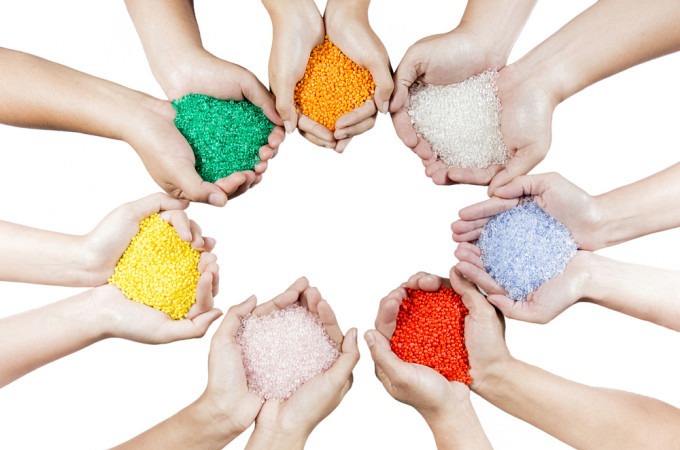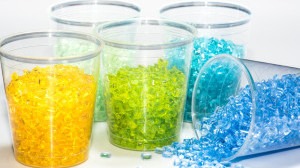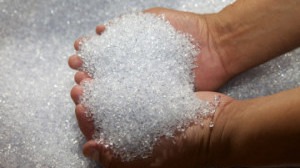Many times — perhaps even most of the time — the standard brown or translucent coloring of a resin for injection molding will suit the requirements for the finished part just fine. For internal parts, small components and the like, the function is much more important than the look of the part. Sometimes, however, the aesthetics and finished appearance of a part play a bigger role, and that standard, unattractive coloring just won’t cut it. Perhaps the part is an external component. Maybe it is being created for color-coded assembly. Or, you just want to stand apart from competitors in some way.

Fortunately for these cases, there are options to add hues and colors to your injection molded parts through plastic colorants and concentrates. These are additives to the base resin used in injection molding, and they greatly expand the aesthetic options for your parts. Here are several tips to keep in mind when examining your options for plastic resin colorants:
1) Know the process: Injection molding typically starts with base resin in the form of small “beads,” tiny hardened units of your material of choice. The base resin is loaded into a hopper, melted at high heat into liquid form, and then injected into the mold where it cools and returns to its solid state. Plastic colorant should be added at the first step of the process in what is typically called a “salt and pepper” mixture (as the usually lighter-colored solid base resin pieces are combined with darker colorant “beads”).
This process typically allows for the best mixing of colorant into the base resin, meaning that the finished part will have a uniform appearance with no swirling, unevenness of color or tone, or incorrect color matching. Even when following this process, however, other shops can still make errors that result in unusable parts (see below for more information).
2) Concerns about appearance: Colorant and base resin mixing is typically done by hand, which is fine — this process is seen as producing no better or worse results than machine mixing. While the melting and injecting process will take care of much of the work of mixing the colorant and base together, it is still important to choose a provider with the expertise to prepare the mixture appropriately — and to know what the mixture should contain.
3) Know the differences between colorants: Just like base resins, not all resin colorants are created the same. Different qualities of colorants can produce different results when used with different resins, creating an imperfect appearance or worse, compromised functionality for your finished part. Here are some colorant qualities to note:
- • Carrier material: The “carrier” for a colorant is what binds it or holds it together. It is an extraneous material in that it serves no other purpose aside from that; however, it can play a big role in the appearance and quality of your finished product. See the points below for more information.
- • Mix ratio: Depending on your colorant, carrier and base resin, there is a certain ratio that the initial mixture should be — usually 3 to 5 pounds of colorant per 100 pounds of base resin. It’s also important to note the percentage of carrier material in the colorant — this material will typically make up 1 to 3 percent of the finished product. If this ratio is off, you can end up with appearance problems like swirling, streaking and unevenness. An improper mix can also create unexpected performance issues in the finished product.
- • Colorant material: Just like carrier material, it’s important to be sure that your colorant material is compatible with your base resin.
4) Resin compatibility: Mentioned just above, but it’s important to dedicate a point to this issue to further explore just why compatibility between resins, colorants and carriers is so important.

Resins are typically formulated for a specific set of performance attributes, often manipulated at the molecular level. Introducing a foreign element into a resin mix — in this case, two elements, the colorant and carrier — can affect that expected performance, especially if the materials react adversely to each other.
For instance, incompatible colorant materials can change the upper and lower temperature tolerances of a resin. They can change the flexibility and hardness of a resin, and they can cause it to react differently to moisture and humidity. Incompatible resin and colorant mixes can dry more easily and can be more susceptible to flaking and cracking — at best, a cosmetic problem, and at worse, an imminent danger.
Aside from reactions between materials, the physical mixture may also have its qualities changed, typically in many of the same ways as above. Essentially, the base resin is being diluted by the colorant, so it is important to either plan and adjust formulations for this, or to make sure that the colorant and the resin are compatible and will adhere to expected results when used together.
5) Certified or other graded usage: As one more specific example of why it is critical to know exactly what is going into a colorant-resin mixture, let’s expand upon usage in certified or graded situations — like medical grade or food grade. Other certifications like quality, safety and green issues can also fall under this umbrella.
As stated above, carriers alone can make up 1 to 3 percent of your finished product, in addition to the colorant. The properties imparted by this amount of material can make the difference between receiving, for example, a safety certification or not — a process that can take years. It’s also important to choose a supplier that can help you consider the medical- or food-grade qualities of the colorant mixture, and to research to make sure that your product will still fall within those parameters, if required.

6) Pantone matching: One final point to think about, coming back to the purely aesthetic aspect of adding colorants to your injection resin molded products: how specific of a color do you need? Many shops will just offer you “blue,” “yellow,” etc. If you have a specific appearance in mind, however, be aware that Pantone matching with colorants with up to 1% accuracy is an option at more experienced facilities, like RevPart. This benefit allows you choose exactly the shade you need to give your product just the right touch.


